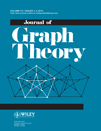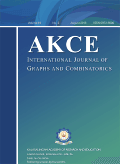
Journal of Integer Sequences
Scope & Guideline
Innovative Insights: Connecting Researchers in Integer Sequences
Introduction
Aims and Scopes
- Study of Integer Sequences:
The journal publishes research that investigates properties, patterns, and applications of integer sequences, including classical sequences like Fibonacci and Lucas numbers. - Combinatorial Analysis:
Many papers explore combinatorial structures related to integer sequences, such as compositions, partitions, and tilings, contributing to the understanding of how sequences can be represented and manipulated. - Recurrence Relations and Generating Functions:
A significant focus is on developing and analyzing recurrence relations and generating functions that define or relate to integer sequences, providing deeper insights into their behavior. - Number Theoretic Applications:
The journal includes research that connects integer sequences to number theory, including divisibility properties, congruences, and relations with prime numbers. - Graph Theory and Combinatorial Structures:
Papers often bridge integer sequences with graph theory, exploring how sequences can model graph properties and combinatorial configurations.
Trending and Emerging
- Advanced Combinatorial Techniques:
There is a growing emphasis on sophisticated combinatorial techniques and identities involving integer sequences, indicating a trend towards deeper combinatorial explorations. - Connections with Algebra and Geometry:
Recent papers are increasingly linking integer sequences with algebraic structures and geometric interpretations, suggesting an interdisciplinary approach to sequence analysis. - Computational Methods and Algorithms:
The incorporation of computational techniques and algorithms for analyzing integer sequences is on the rise, reflecting the importance of computational mathematics in contemporary research. - Applications in Probabilistic and Statistical Models:
Emerging themes include the use of integer sequences in probabilistic models and statistical analysis, showcasing their relevance in broader mathematical contexts. - Exploration of New Sequence Families:
There is a trend towards discovering and characterizing new families of integer sequences, driven by both theoretical curiosity and practical applications.
Declining or Waning
- Elementary Number Theory:
While still present, the focus on basic elementary number theory related to integer sequences has decreased, possibly due to the increasing complexity and specialization of topics. - Historical Perspectives:
Research that centers on historical or philosophical perspectives of integer sequences has waned, as the journal shifts towards more contemporary mathematical applications and theoretical advancements. - Basic Sequence Generation Techniques:
There seems to be a decline in publications focused solely on basic methods of generating integer sequences, as researchers increasingly prefer to explore more complex and nuanced relationships.
Similar Journals

Notes on Number Theory and Discrete Mathematics
Empowering Researchers Through Scholarly ExchangeNotes on Number Theory and Discrete Mathematics is a distinguished journal published by the BULGARIAN ACADEMY OF SCIENCE, dedicated to advancing research in the fields of number theory and discrete mathematics. Renowned for its scholarly contributions, this journal serves as a platform for researchers, professionals, and students to disseminate their findings and engage in critical discourse. The journal’s ISSN is 1310-5132 and its E-ISSN is 2367-8275, enhancing its visibility and accessibility in the academic community. While it currently operates under traditional access constraints, the journal is committed to fostering an open exchange of ideas and methodologies that drive innovation in mathematical research. By focusing on theoretical developments and applications, Notes on Number Theory and Discrete Mathematics plays a pivotal role in the ongoing exploration of mathematical principles, appealing to a broad audience and helping to shape the future of the discipline.

CANADIAN JOURNAL OF MATHEMATICS-JOURNAL CANADIEN DE MATHEMATIQUES
Elevating research standards in the world of mathematics.Canadian Journal of Mathematics - Journal Canadien de Mathématiques is a prestigious peer-reviewed journal published by Cambridge University Press, which aims to advance the field of mathematics through the dissemination of high-quality research articles. With its ISSN 0008-414X and E-ISSN 1496-4279, the journal plays a pivotal role in fostering mathematical research and collaboration. It has been recognized for its impactful contributions, currently holding a category quartile ranking of Q2 in Mathematics (miscellaneous) for 2023 and sits in the 66th percentile among its peers according to Scopus rankings. As the journal continues its convergence from its inception in 1994 through to 2024, it remains a vital resource for researchers, professionals, and students seeking to stay at the forefront of mathematical developments. The journal does not operate under an open access model, allowing for a curated collection of articles that adhere to rigorous academic standards.

JOURNAL OF ALGEBRAIC COMBINATORICS
Fostering scholarly dialogue in the realm of algebraic combinatorics.JOURNAL OF ALGEBRAIC COMBINATORICS, published by SPRINGER, stands as a premier resource in the fields of algebra and combinatorics, playing a pivotal role in advancing research in these disciplines. With an esteemed impact factor reflective of its academic rigor, it holds a prestigious Q1 ranking in both Algebra and Number Theory, as well as in Discrete Mathematics and Combinatorics, according to 2023 assessments. Established in 1992, this journal features contributions from leading experts worldwide, offering insights into the latest developments and methodologies. Although not an open-access journal, it provides a wealth of valuable information and research findings focusing on combinatorial structures, theory, and applications that are essential for advancing academic inquiry. As a vital publication for researchers, professionals, and students alike, JOURNAL OF ALGEBRAIC COMBINATORICS continues to shape the conversation within the mathematical community and beyond, making it indispensable for those engaged in the dynamic landscape of mathematical sciences.

Advances and Applications in Discrete Mathematics
Advancing Theory and Practice in Discrete MathematicsAdvances and Applications in Discrete Mathematics, published by PUSHPA PUBLISHING HOUSE, is a premier journal dedicated to the flourishing field of discrete mathematics. With a focus on both the theoretical aspects and practical applications, this journal serves as a valuable resource for researchers, professionals, and students aiming to explore cutting-edge developments in areas such as combinatorics, graph theory, and algorithms. Although specific impact factors have yet to be established, its commitment to quality scholarship is reflected in its rigorous peer-review process, ensuring that published articles meet high academic standards. The journal encourages open access to disseminate knowledge effectively, fostering collaboration and innovation within the discrete mathematics community. As a vital platform for researchers wishing to contribute to this dynamic field, Advances and Applications in Discrete Mathematics plays a critical role in promoting advancements and applications that are essential to both theoretical exploration and practical problem-solving.

JOURNAL OF GRAPH THEORY
Exploring the Intersections of Mathematics and InnovationJOURNAL OF GRAPH THEORY, published by WILEY, stands as a pivotal resource in the fields of Discrete Mathematics and Combinatorics, as well as Geometry and Topology. Since its inception in 1977, this esteemed journal has fostered the dissemination of influential research, currently categorized in the prestigious Q1 quartile according to the latest metrics for 2023. With an ISSN of 0364-9024 and an E-ISSN of 1097-0118, it caters to a global readership of researchers, professionals, and students dedicated to advancing their knowledge in graph theory. By maintaining a strong rank in Scopus—39th out of 106 in Geometry and Topology, and 38th out of 92 in Discrete Mathematics and Combinatorics—it reflects its significance and impact within the academic community. Although it does not offer open-access options, its rigorous peer-review process ensures that only high-quality original research is published, thus reinforcing its reputation as a leading journal in this mathematical domain.

AKCE International Journal of Graphs and Combinatorics
Advancing Knowledge in Graph Theory and Combinatorics.AKCE International Journal of Graphs and Combinatorics, published by TAYLOR & FRANCIS LTD, serves as a significant platform in the field of Discrete Mathematics and Combinatorics. With its commitment to open access since 2015, the journal ensures that cutting-edge research is readily available to a global audience, promoting the dissemination of knowledge and high-quality scholarship. Recognized for its impact in the discipline, the journal is currently ranked Q3 in its category for 2023 and holds a commendable Scopus ranking, falling within the 69th percentile. Researchers, professionals, and students alike will find invaluable insights and contributions in this journal, which spans a wide range of topics related to graph theory and combinatorial structures. Operating from its base in India, and converging from 2011 to 2024, the AKCE International Journal invites submissions that push the boundaries of mathematical exploration and foster innovative methodologies in a rapidly evolving field.

Discrete Mathematics Letters
Cultivating a community of mathematical innovators.Discrete Mathematics Letters is a prominent open-access journal dedicated to advancing the field of Discrete Mathematics and Combinatorics, published by Shahin Digital Publisher. Since its inception in 2019, this journal has rapidly established its presence in the academic community, securing a respectable Q2 category ranking in the 2023 Scopus database, positioning itself at rank #45 out of 92 in its field, making it a valuable resource for researchers and practitioners alike. With a commitment to disseminating high-quality research, Discrete Mathematics Letters provides an accessible medium for sharing innovative ideas and findings within the mathematical sciences, ensuring that researchers, students, and professionals stay informed about the latest developments. As an open-access journal, it provides free access to publications, fostering collaboration and knowledge exchange among the global research community.

Journal of Combinatorial Algebra
Elevating Research Standards in Algebra and CombinatoricsThe Journal of Combinatorial Algebra, published by the European Mathematical Society (EMS), is a pioneering open-access journal dedicated to advancing research in the fields of Algebra and Number Theory, as well as Discrete Mathematics and Combinatorics. Since its inception in 2018, the journal has been committed to promoting high-quality, rigorous research, evidenced by its 2023 scopus rankings placing it in the second quartile across both disciplines. It serves as a vital platform for academics, researchers, and students to share innovative findings, methodologies, and theoretical advancements within combinatorial algebra, facilitating collaboration and knowledge dissemination in the mathematical community. With its open access policy adopted in 2021, the journal ensures that its content is freely available to a global audience, further enriching the landscape of mathematical research. The journal's editorial board, composed of leading experts, guarantees the integrity and academic excellence of published articles, making it an essential resource for those engaged in the dynamic fields of combinatorics and algebra.

Australasian Journal of Combinatorics
Fostering Insights in Discrete MathematicsThe Australasian Journal of Combinatorics, published by the CENTRE DISCRETE MATHEMATICS & COMPUTING, serves as a vital platform for researchers and professionals engaged in the dynamic field of discrete mathematics and combinatorics. With an ISSN of 2202-3518 and an E-ISSN of the same, this journal has been committed to open access since 2014, ensuring that groundbreaking research is readily available to a global audience. Based in Australia, specifically at the Department of Mathematics, University of Queensland, this journal spans the years from 1996 to 2024, showcasing the evolution of combinatorial research over nearly three decades. Recognized in the 2023 category quartiles as Q3 in Discrete Mathematics and Combinatorics, it ranks 68th out of 92 in Scopus, reflecting its growing influence despite its current percentile of 26th. The Australasian Journal of Combinatorics is dedicated to fostering innovative research and theoretical development, making it a valuable resource for academics and students alike.

Pure and Applied Mathematics Quarterly
Exploring the Depths of Theoretical and Practical MathematicsPure and Applied Mathematics Quarterly is a prestigious journal published by INT PRESS BOSTON, INC, focusing on the diverse and evolving field of mathematics. Since its inception in 2007, this journal has grown significantly, currently holding a Q1 ranking in the Mathematics (Miscellaneous) category for 2023, positioning it among the leading publications in the discipline. With a commitment to publishing high-quality research, Pure and Applied Mathematics Quarterly fosters innovation and dialogue within the mathematical community by providing a platform for theoretical advancements and practical applications. The journal remains accessible to researchers and professionals through its ISSN 1558-8599 and E-ISSN 1558-8602, although it does not currently offer open access. As a vital resource for mathematicians, educators, and students, this journal endeavors to expand the frontiers of mathematical knowledge and contribute to the academic dialogue surrounding this fundamental science.